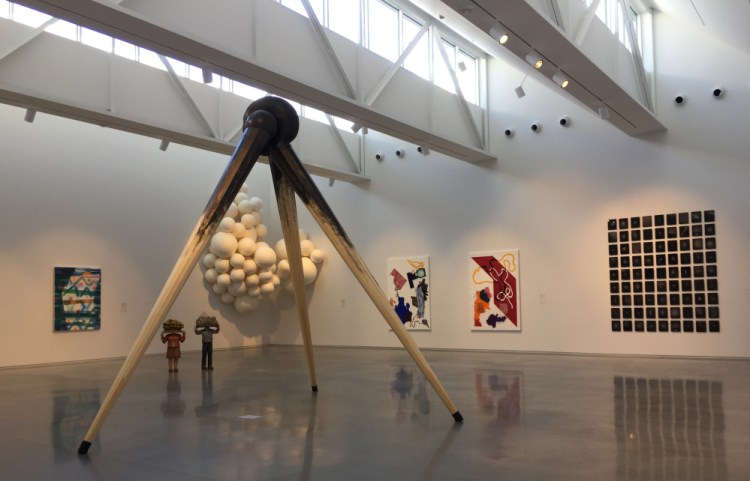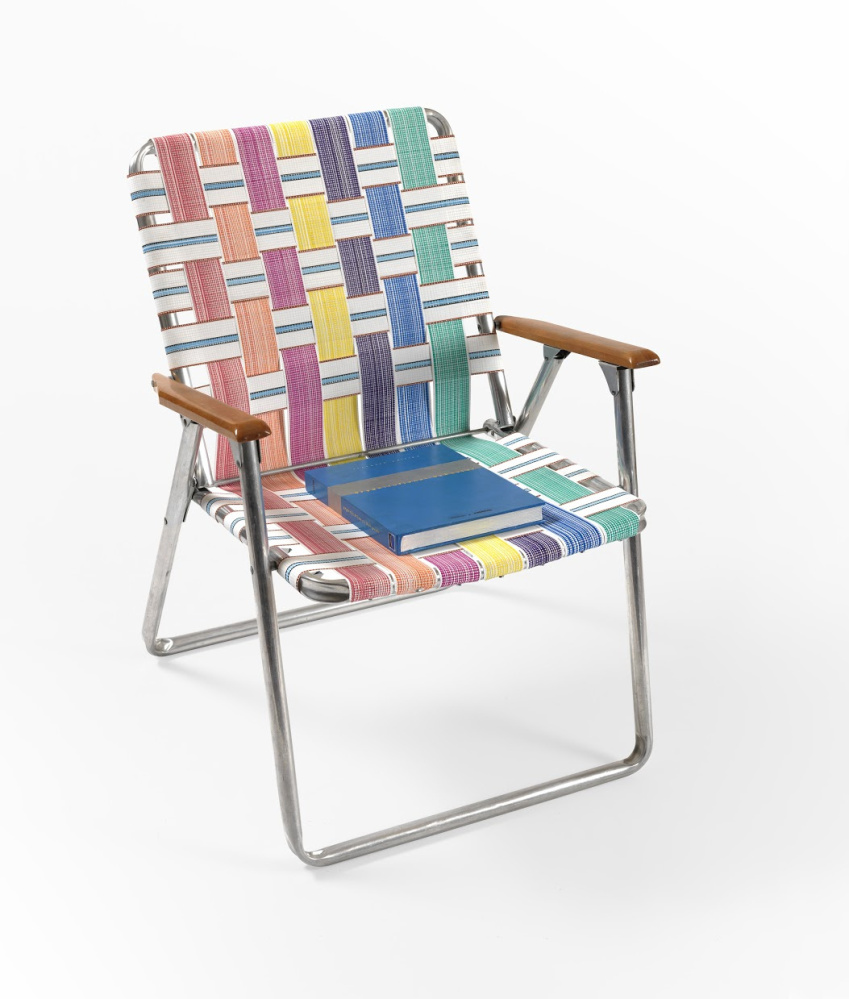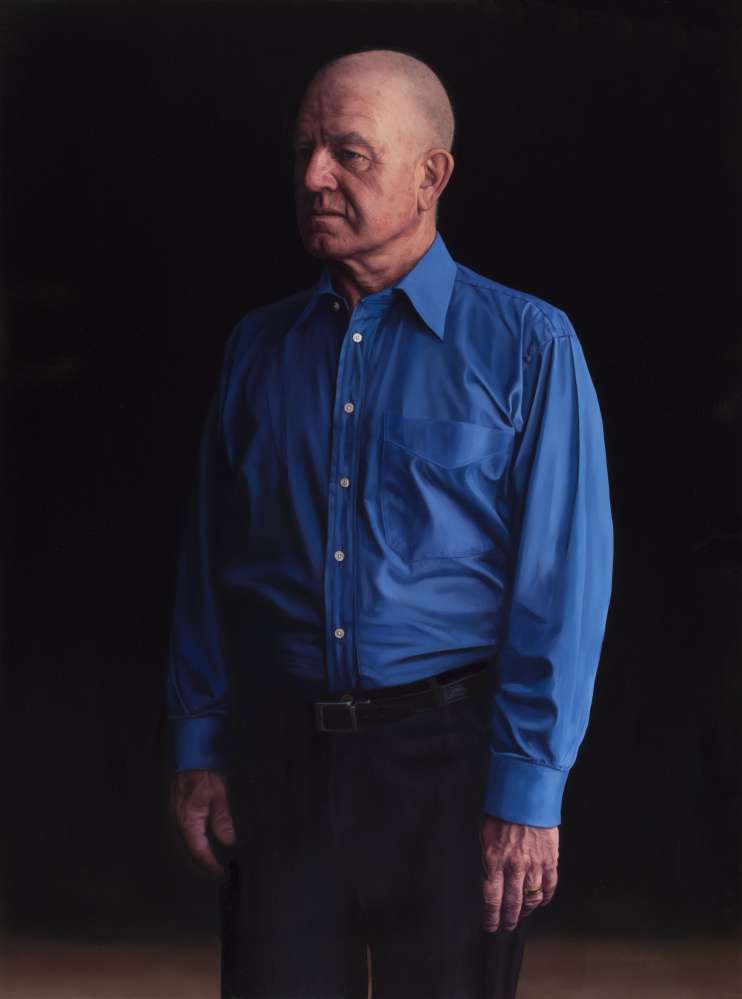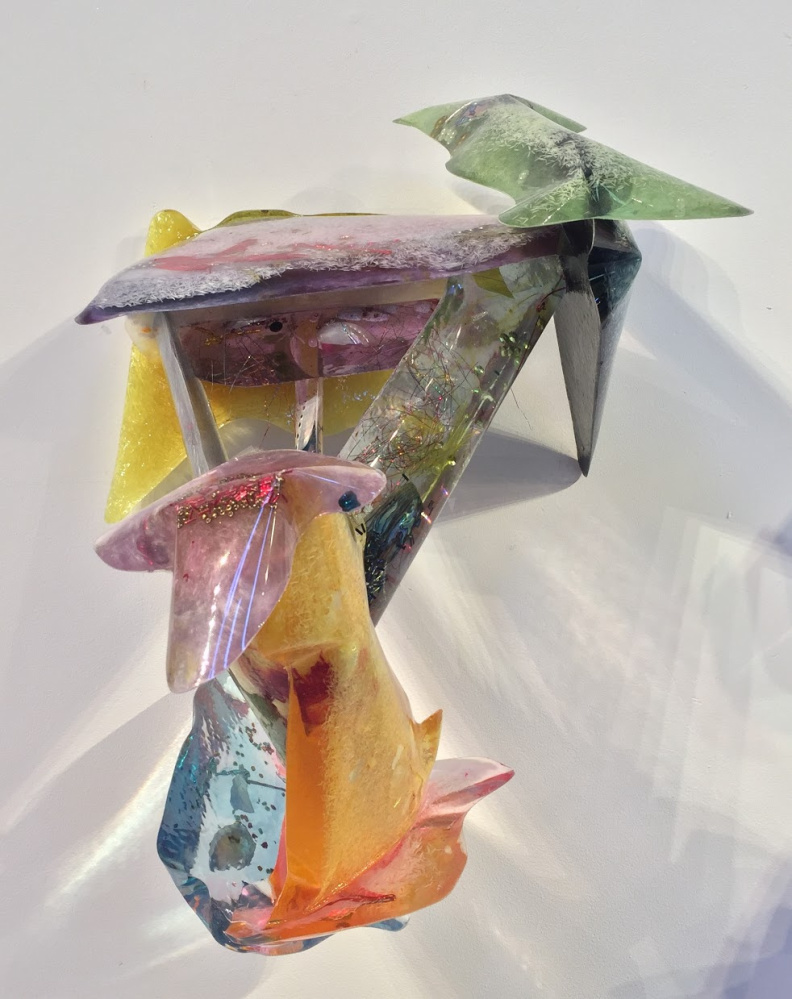The 2016 Biennial at the Center for Maine Contemporary Art is Maine’s most widely anticipated exhibition in years. While the first slate of shows stuck to CMCA Director Suzette McAvoy’s exquisitely sculpted script, it’s a whole new thing to have outside jurors take over the fresh-out-of-the-box architectural gem to cobble a show only from open-call submissions.
Like American democracy, juried shows are messy affairs. Submitters had about a 1 in 35 chance of being selected: 25 artists were picked from 780 submissions by jurors Christine Berry of Berry Campbell Gallery and John Yau, a leading writer whose art criticism regularly appears in Hyperallergic, both based in New York City. There is much to say about every work in the show – biennials are really about fresh conversations – but, with limited space, we have to content ourselves here with merely starting conversations you can finish when you visit the must-see 2016 CMCA Biennial.
Instead of laying out a narrative map of the show, what follows are my responses to questions that have repeatedly come up as I’ve talked with other people about the biennial.
Q: Is it good?
A: If you’re an opinionated artist who wasn’t selected for it, then you are highly unlikely to think it’s a good show. But compared to other regional biennials, it’s excellent. Is it flawed? It wouldn’t be a biennial if it weren’t. Biennials are about fresh blood, new directions and an outside cross-sectional glimpse of the community’s art culture. Berry and Yau are successful on all three counts.
Q: How’s it look?
A: The show looks terrific. This is one of the many challenges of a juried biennial. Jurors select a bunch of works with little ability to consider them in terms of the space and how they look together. Then, typically, the host institution has to find a way to install them as a group, even if there are way too many.
This show is testament both to the CMCA’s new building and the design chops of the staff. As it does here, Richard Van Buren’s work led the viewer into the Portland Museum of Art’s last biennial. But, in Portland, it was crowded into a gallery with more than a dozen other artists. While I still think Van Buren’s semi-clear shapeless cast plastic lumps, with technicolor inclusions look like what you find in pools on the floor after a drunken frat party, the CMCA’s entrance with its sometimes-dazzling daylight makes it easier to see how he earned his top-shelf resume.
The center’s two smaller galleries are excellent spaces: They are nothing but assets and pose no challenge that interferes with the viewing of the work. The soaring main gallery is trickier, but it allows for large scale work. Andrew White’s large tripod with an inflated-seeming joint of black rubber connecting its giant white wooden legs at the top is the first thing in the gallery, but through it you see Sarah Bouchard’s deliriously organic installation of giant handmade paper balls installed like a bunch of grapes in the far corner of the space. It’s an extraordinary contrast: Apollonian and Dionysian, male and female, organic and stiff, cool and cooler – take your pick. Hanging on either side of Bouchard’s sculptural installation are paintings by two artists whose work I really like: Kayla Mohammadi and George Wardlaw. But their use of bits of popping color on generally white canvases in a large-scale space otherwise devoid of color favors neither. I prefer Mohammadi’s smaller, denser paintings. And Wardlaw’s muscular moodiness is far more poignant on its own.
Q: Any favorites?
A: Carly Glovinski’s simulations of books with drawings of their indexes, hunting-dog wallpaper, an empty-centered puzzle of the Grand Canyon and, in particular, a folding beach chair (the plastic straps are paper drawings) with a fake book (“Organizational Behavior”) on it are provocative and hilarious. Kathy Weinberg’s this-is-who-we-are paintings that look like Delft-style tiles caught me in the act of photographing them: I only saw the guy in a museum taking a digital picture as I was doing exactly that. Philip Brou’s extraordinarily high-focus and high-gloss portraits of movie extras are as exciting and entertaining as they are well-painted. If Brou could make enough of these, he could be an international star. But who has that kind of patience, let alone the time?
Q: What else is good?
A: There is no dearth of strong work. Paul Oberst’s four-screen video opens spatially and then slowly but insistently reveals itself to be a work of uncommon technical sophistication. Kate Russo’s grid of 20 “Paintings by Men” doubles back on its visually-leveling logic to catch us in our own trap of prior knowledge (to the extent we recognize palettes and paintings in her pixelated ovals on small canvases: big names, for example, stand out). Richard Iammarino’s abstractions look like album covers Frank Stella might have designed on an early ’70s acid trip, and yet they engage many contemporary painting conversations, such as craft, symmetry, retro aesthetic, negative space and drawing. Tonee Harbert’s nifty-gritty black-and-white photos pulse with narrative mystery. Cole Caswell’s soaring grid of dark celestial tintypes lifts his work to a new and more ambitious level. Maurice Dorenfeld’s pair of COBRA-inspired hand-woven hanging rugs (imagine Mondrian or Hans Hofmann with a Fauvist palette) quiver with intensity. Gail Skudera’s sliced and woven photo collages craft a nostalgia for a deep-rooted feminist discourse. Lynn Duryea’s ceramics are sculpturally elegant deco-objects. And Emily Brown’s gray wash brush-drawing landscapes make the case that the higher the context, the better they look. And they look great.
Q: Why are juried shows so often bad?
A: Juried shows challenge the public to look critically at the strongest and least compelling works. After all, your least favorite work was selected over the digital submissions of 755 other artists from your community. Moreover, the works aren’t generally picked to be shown together, so biennials tend to exude chaos – an aesthetic thrilling to some but bemusing to many. Of course, personal taste is part of it: I don’t know anyone with a better eye than McAvoy, and yet she admires Van Buren’s plastic-puke pastilles and Scott Davis’s tondos, which, to me, look like he brutally strangled old paint until rigor mortis set in.
Q: Charging artists to submit is wrong, right?
A: Many artists have made the point that other arts don’t charge submitters and that musicians, for example, get a fee or a take of the gate. But exhibitions like this are expensive to mount, and they can’t happen without money. However, the CMCA found local businesses – Allen Insurance and Financial, and Chubb – to underwrite the exhibition costs, so artists were not charged a submission fee.
Q: What’s your grade of the show?
A: Overall, it’s a B-plus. The breadth of perspective chosen and the installation earn an A-minus, but the art itself falls around a C-plus.
Let’s be clear: This grade sets a high-water mark for recent regional biennials. An ethically juried show without flaws is like a perfectly round pumpkin without ridges: It doesn’t exist because, maybe, it’s not meant to. Juried shows aren’t as contrived or as slick as curated shows. The idea is that juried shows make up for their lack of clarity, consistency and message with freshness, a level playing field and objective outside perspective.
There is risk in the jury process, and that’s why we bring in outside jurors who can be objective and unhindered by the instinct to be more diplomatic to some than others. When you try new things, you don’t always like everything you find on your plate. But you don’t have to linger on the stuff you learned you don’t like, and finding fresh new favorites is kind of the whole point of art.
Freelance writer Daniel Kany is an art historian who lives in Cumberland. He can be contacted at:
dankany@gmail.com
Send questions/comments to the editors.







Success. Please wait for the page to reload. If the page does not reload within 5 seconds, please refresh the page.
Enter your email and password to access comments.
Hi, to comment on stories you must . This profile is in addition to your subscription and website login.
Already have a commenting profile? .
Invalid username/password.
Please check your email to confirm and complete your registration.
Only subscribers are eligible to post comments. Please subscribe or login first for digital access. Here’s why.
Use the form below to reset your password. When you've submitted your account email, we will send an email with a reset code.